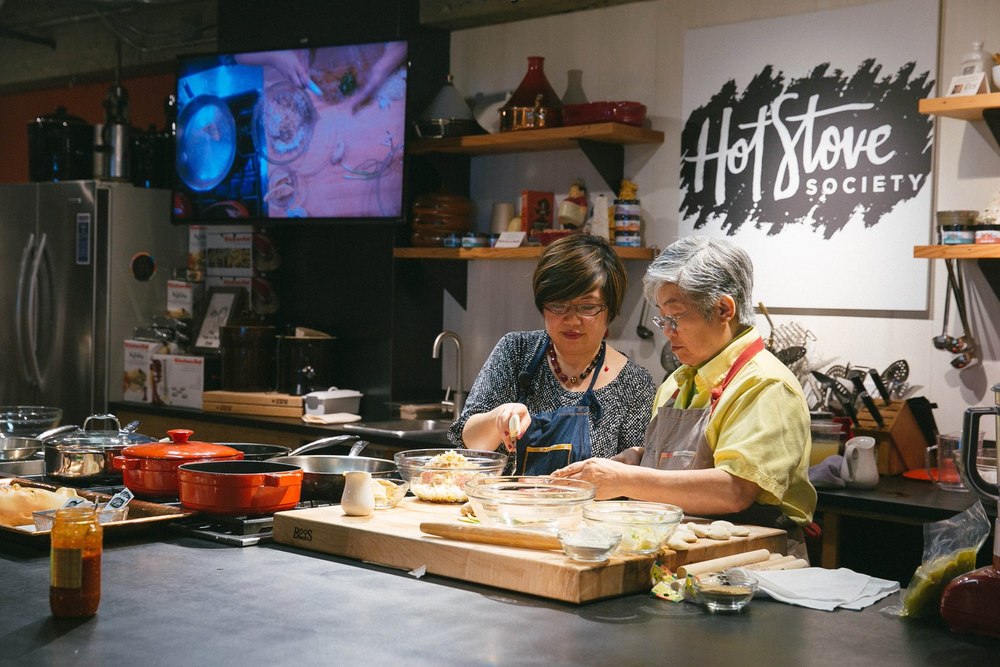An Heirloom Wok in the Making
Hsiao-Ching Chou
Usually, a home cook doesn't need more than one wok. But I wanted a second Cen Brothers wok from Shanghai. These will be heirlooms.
Read MoreIf you have a question or a comment, please send me an email.
123 Street Avenue, City Town, 99999
(123) 555-6789
email@address.com
You can set your address, phone number, email and site description in the settings tab.
Link to read me page with more information.
Filtering by Category: Traditions
Usually, a home cook doesn't need more than one wok. But I wanted a second Cen Brothers wok from Shanghai. These will be heirlooms.
Read More
This is one of my favorite soups because it's so straightforward to make and you can change the flavor profile easily. To make the soup more substantial, you can add spinach and silken tofu to the recipe below. You can even add some minced chicken or regular or bay shrimp.
TOMATO EGG DROP SOUP WITH GINGER
Makes 5 cups
2 tablespoons vegetable oil
1 cup of diced fresh tomatoes (large dice)
2 stalks green onions, chopped
2 teaspoons grated fresh ginger
4 tablespoons soy sauce
5 cups water
3 eggs, beaten
Sesame oil
Chopped cilantro, optional
Heat wok over high heat for 30 seconds. Add the vegetable oil and heat for about 30 seconds.

Add the tomatoes – be careful of the splattering – green onions, fresh ginger and soy sauce. Stir fry this mixture for about 15 seconds.

Add the water and bring to a boil. As soon as the soup starts to bubble, turn heat down to medium. Drizzle in the beaten eggs and stir. Drizzle with the sesame oil.

Turn off the heat. Taste for seasoning. If needed, you can add a pinch of salt. Serve immediately with optional chopped cilantro.

From our May 2, 2015, potsticker cooking class at Hot Stove Society in Seattle. Photo/Hien Duong.
It was so cool to be asked to submit a post for Food52's celebration of heirloom recipes for Mother's Day.
I have been making dumplings at my mother’s side for the past thirty years. I first learned how to fill the wrappers and pleat them shut when I was in grade school. In my teens, I learned how to make the dough and roll the skins. Before I graduated college and left home for my first job, I had to be able to make a batch of potstickers (pan-fried dumplings) from beginning to end as a test of my skills—and to reassure my father that, some day, when I met my future husband, I would be able to feed him. They weren’t pretty in the beginning, but my technique evolved over the years; thousands of dumplings taught my fingers the nuances of the dough.
 The beginnings of lion's head meatball stew.
The beginnings of lion's head meatball stew.
Back in 2010, I contributed an essay to Edible Portland about the meaning of Chinese New Year to me. I dug this up recently to share with a friend and wanted to post it here, too. I feel that it was the definitive piece about this particular aspect of my life journey. The eve of the Year of the Sheep (or Ram or Goat) is Feb. 19, 2015, so I offer this piece as a wish for a new year filled with good fortune.
Over the past decade of Chinese New Year celebrations, I've realized that the holiday has served as a milestone marker, a veritable growth chart of my evolution from a career girl to wife to a working mother of two. If hosting a feast was at first a way to gain friendship and stature, the wisdom of age focuses the lens on what has always been: Chinese New Year is a ultimately a time for family communion and reconciliation.
 Hot pot
Hot pot